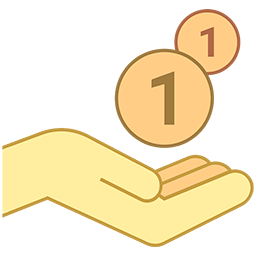Web portal: from design and development to maintenance
This is an automatic translation.
Click here to read the publication in the original language.
As you know, every portal is a site, but not every site is a portal. If the sites are static, then web portals give users access to a much larger volume of content and, most importantly, to interactive services and functionality.
A functionally rich portal keeps the user's attention longer, forcing him to spend more time on the site. Here you can chat, solve everyday tasks, work with e-mail, view news, take part in voting, etc. This is beneficial to the owner of the site, so the choice in deciding to create your own Internet resource often outweighs the portal - the costs, although more, pay off faster, the income from the portal is much higher.
The main stages of creating a web portal
1. Definition of project goals
The purpose of creating a web site should be clear from the very beginning - for whom it is created and why. What will the user get at the start-up phase, and what will be required soon. Functionality, design, structure - these issues are resolved at the design stage.
2. Statement of technical specifications
Both parties should be involved in the drafting of the TOR. TK defines:
• Target audience;
• mission of the project;
• Schematic structure: sections, subsections, number of pages;
• Definition of necessary modules;
• Design;
• Technology selection - CMS, mobile version, script library, etc.
3. Design layout (or "mocap")
This stage in the development process is divided into several small:
• Creation of several conceptually different layouts of the future main page, their revision and approval;
• Page layouts, including their versions for mobile devices.
All design elements are drawn at this stage. Instead of content, demos of text and images are used. Main content may be provided by the customer later.
4. Layout, programming and implementation in CMS
At this stage, the typesetter and programmer are connected. Product quality directly depends on the professionalism of these specialists. The following tasks are solved:
• CMS layout, including the ability to implement various modules.
• The correct choice of code option - the "easier" the code, the easier the site.
• Cross-browser - work on adequate display of the site in browsers.
5. Content Filling
Without content, the site is useless. The portal differs from the site in that the content is filled in by the users themselves, the portal only provides functionality. The simpler and more interesting the functionality, the more chances the resource has for attracting the attention of the audience.
6. Launching the site
The site is transferred to the hosting, receives a domain name and is registered on the network. It will be useful at this stage to consider the possibility (if necessary) to carry out work on the CEO to increase positions, establish systems for processing analytical data, create an HTML map, etc.
7. Testing
An important stage at which all the shortcomings, deficiencies and weaknesses of the project are identified. The site is tested by several people, checking the operation of the modules, download speed, proper placement of links, etc.
8. Promotion
Even a remarkably made resource will not work on its own, it must be promoted. Users should know about the resource, but, most importantly, to constantly learn something new. It is not enough to get the user, he must be able to keep.
An Internet resource today is not just a bulletin board, as it was not long ago, but a fully-fledged business tool that allows you to conduct business around the world literally without leaving your home. The success of a business depends on the quality of the resource’s work, so the right choice of platform is important.
X Networks , in collaboration with Digital Marketing , has been developing high-tech projects since 2001. The main activity is the creation of highly loaded intelligent social networks and multifunctional projects of high productivity. The company introduces its own platform QwertySocial Networks Engine, which allows you to quickly deploy a social network, including multi-language.
The company in all projects uses developments in the field of artificial intelligence, including its own direction of Qwerty AI.
X Networks provides a full range of services for the rapid implementation of a social network:
• development of requirements for the functional part;
• definition of additional functions;
• development of GUI and project design;
• preparation of server infrastructure;
• installation and startup;
• marketing promotion.
The company's specialists offer the development of effective projects based on complex strategies, using IT technologies in the field of web design and the latest developments in the field of artificial intelligence.
And, most importantly, X Networks, in fact - if not the only one on the Russian market, then at least one of the few companies offering the creation of highly loaded web portals based on horizontally-scalable solutions that allow you to create resources that can withstand multi-million web traffic!
PORTAL COST CALCULATOR ON THE QSNE BASIS
This is an automatic translation.
Click here to read the publication in the original language.
This post is available in the following languages:


 Advertising on our project is a great way to promote a brand and attract new customers for your company!
Advertising on our project is a great way to promote a brand and attract new customers for your company!  AUD: 0.6455 $
AUD: 0.6455 $  CAD: 0.7299 $
CAD: 0.7299 $  CHF: 1.0977 $
CHF: 1.0977 $  CNY: 0.1380 $
CNY: 0.1380 $  EUR: 1.0674 $
EUR: 1.0674 $  GBP: 1.2404 $
GBP: 1.2404 $  JPY: 0.0065 $
JPY: 0.0065 $  RUB: 0.0107 $
RUB: 0.0107 $ 





























